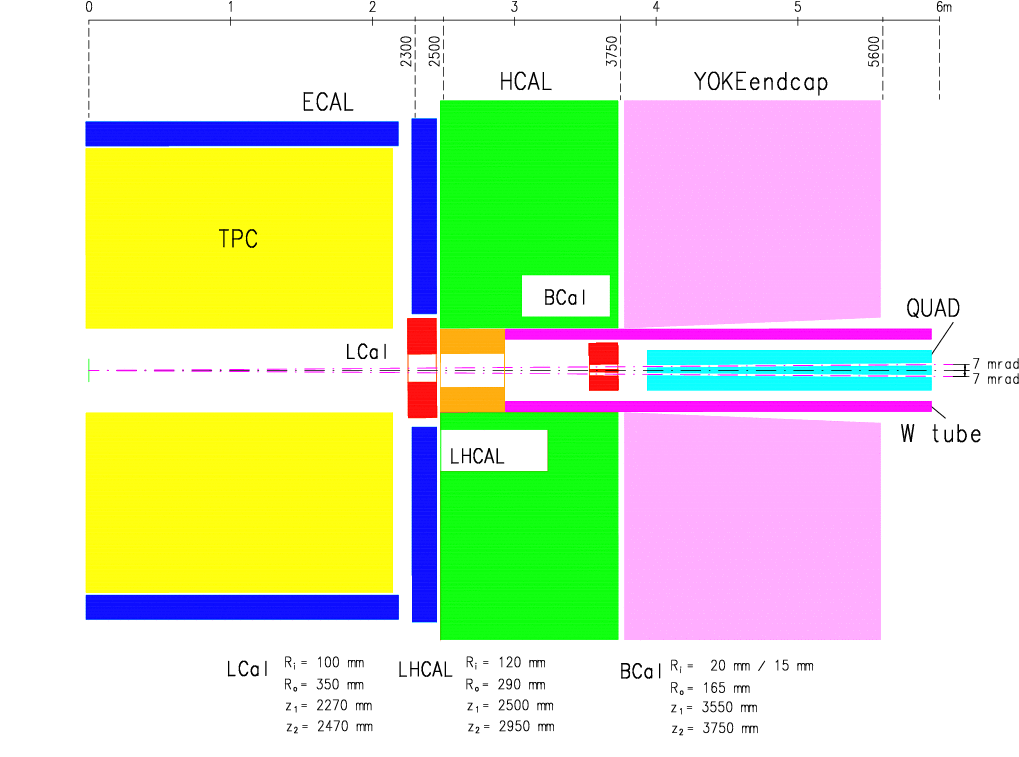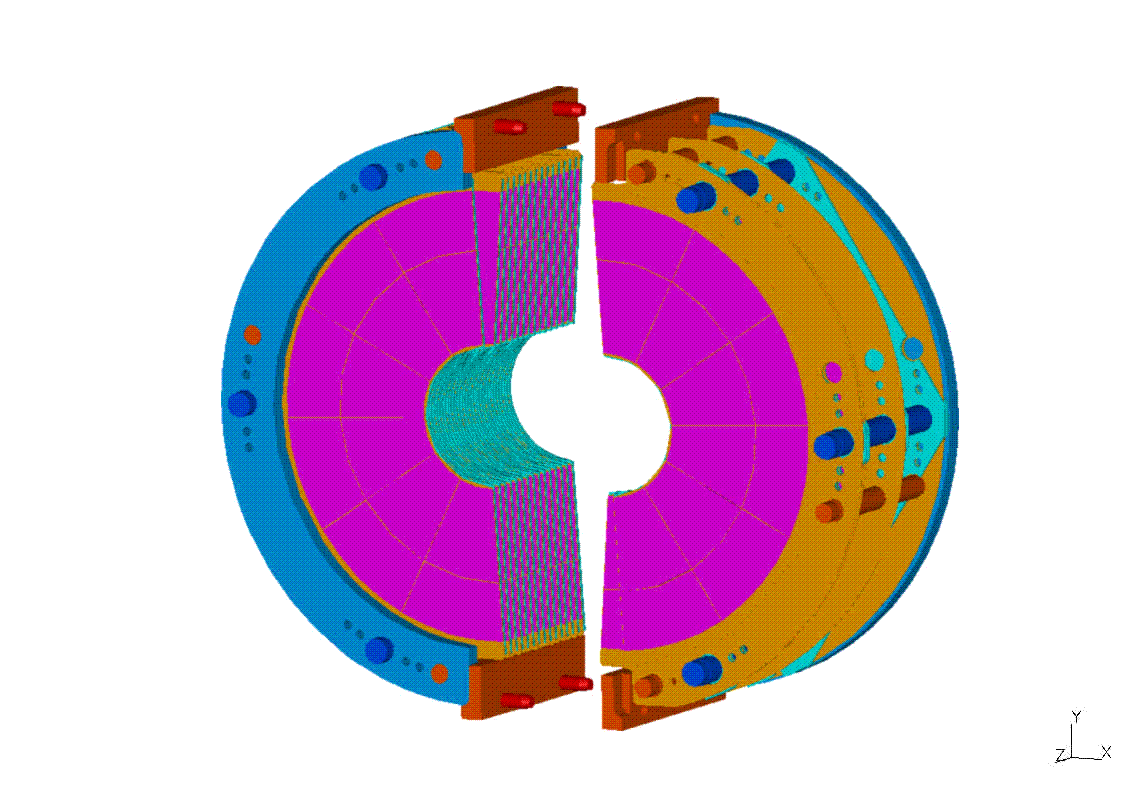
BeamCal is an electromagnetic sandwich calorimeter that uses Tungsten as absorber. It serves three major purposes:
Improving the hermeticity of the ILC detector by providing electron and photon identification down to polar angles of a few mrad. This is a specially challenging task due to the vast amount of deposited energy from the electron-positron pairs originating from beamstrahlung.
Reducing the backscattering from pairs into the inner ILC detector part and protecting the final magnet of the beam delivery system.
Assisting beam diagnostics. A fast luminosity signal will be provided by BeamCal. The detailed analysis of the shape of the energy deposition from pairs hitting the BeamCal grants access to parameters of the colliding beams.
The sensors of the BeamCal must be very radiation hard. The technologies under investigation are:
polycrystalline CVD diamond (Chemical Vapor Deposition),
single crystal CVD diamond,
GaAs,
radiation hard silicon.
Geometries (LDC V5):
Unit 14 mrad Graphite shield thickness mm 100 Absorber layer 1 X0
mm 3.5 Sensor layer mm 0.3 Readout plane/air ap mm 0.2 total X0 int 30 x/y/z position mm +24.2/0/±3450 Rinner (sensitive area) mm 20 Router* (sensitive area) mm 150 Rbeam_in** mm 15 θinner mrad 5.8 θouter mrad 43.5 Tilt mrad 7 ~ Weight of absorber and sensor (sensitive area) kg 144.4 Table 1: BeamCal geometries for different beam settings.
* We assume an Anti-Detector Integrated Dipole field: the magnetic field is parallel to the outgoing beams. Optimized for low backgrounds.
**Crossing angles of 14 or 20mrad require an additional hole in each BeamCal for the incoming beams.
Unit 14 mrad 0.8 RM cell size Rings int 16 ΔR mm 8.125 Sectors int 8 of 45 degree Cells per sector int 160 Cells/layer int 1280 Blind area degree ±22.5 around incoming beam, rings with R>63.4 are complete (n > 6) Table 2: BeamCal segmentation.
LumiCal serves three major purposes:
Improving the hermeticity of the ILC detector by providing electron and photon identification down to polar angles of a few mrad.
Reducing background by acting as a mask.
Measuring the
rate of Bhabha events at low angles. The well known Bhabha
scattering cross section will allow the precise determination of the luminosity of the ILC.
Achieving the
desired precision of 10-4 is a challenge.
The technology of a Si-W sandwich calorimeter is under investigation for the LumiCal.
One of the challenges for LumiCal is the needed mechanical precision. A laser based position monitoring system is under development for LumiCal.
Geometries:

| Unit | 14 mrad | ||
| Absorber layer |
1 X0 |
mm | 3.5 |
| Gap for Electronics | mm | 0.1 | |
| Sensor layer | mm | 0.300 | |
| Support | mm | 0.6 | |
| X0 | int | 30 | |
| x/y/z position | mm | +15.9/0/2270 | |
| Rinner*(sensitive area) | mm | 80 | |
| Router(sensitive area) | mm | 190 | |
| θinner | mrad | 35.3 | |
| θouter | mrad | 83.9 | |
| Tilt | mrad | 7 | |
| ~ Weight of absorber and sensor | kg | 192.3 | |
| Unit | 14 mrad | ||
| Pad design - std | Azimuthal sectors | int | 48 |
| ΔR | rad | 131 | |
| Sectors | int | 64 | |
| Δφsec | mrad | 0.75 | |
| pads/layer | int | 3072 | |
GamCal is a calorimeter designed to measure the beamstrahlung photons, which are very collinear to the beam. Therefore GamCal has to be positioned some 100 meters down the beam lines in the extraction line. More details to be added soon.
Pair-monitor is the Silicon pixel sensor designed to measure the beam profile at the IP:
Beam size
Displacement and rotation of the beam
The number of particles in the beam bunch
Pair-monitor is designed to be located at the first layer of BeamCal.
Geometry:
| Hole radius (Upstream) | 1 cm |
| Hole radius (Downstream) | 1.8 cm |
| Router (sensitive area) | 10 cm |
| Thickness of sensor layer | 0.2 ~ 0.3 mm |
| Tilt angle | 7 mrad |
| Pixel size | 0.4 mm × 0.4 mm |
| Total number of readout pixel | 190000 |